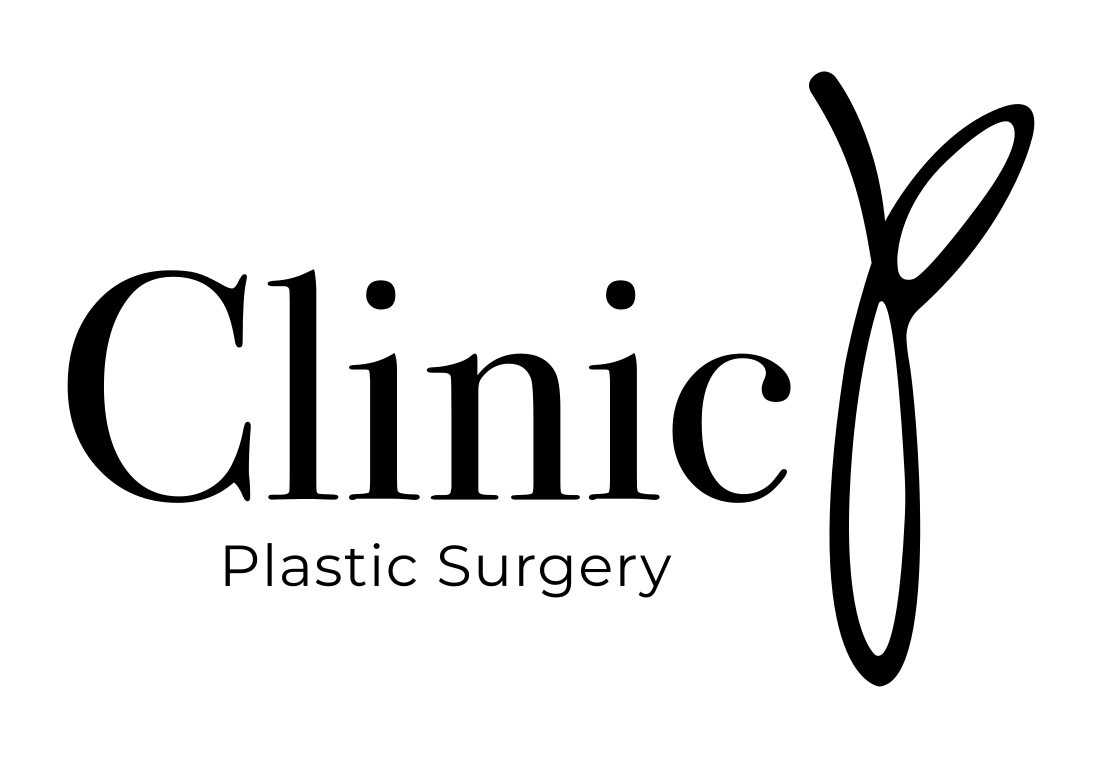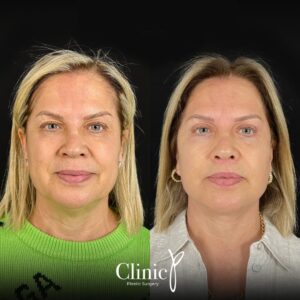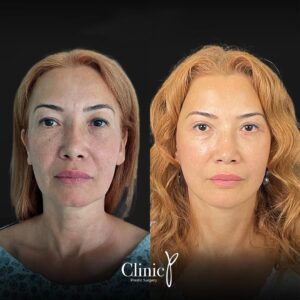Aging is an inevitable process, and its first symptoms begin to become visible on the face as early as one’s thirties. As one gets older, these symptoms become more evident, affecting all the tissues of the face. Facial bones become thinner, and the skin on the face starts to lose its elasticity, resulting in wrinkles. Due to the influence of gravity, sagging occurs in the subcutaneous adipose tissue and soft tissue, leading to mylosis. Wrinkles and sagging become prominent across the skin. Eventually, the face takes on a tired, aged, and decrepit appearance. With a face lift treatment, it is possible to address these consequences of aging.
Face lift surgery does not halt the aging process. The surgery imparts a younger and more vibrant appearance than the person’s age, but aging continues. The face is anatomically divided into three different regions, each approached separately in surgical rejuvenation. The upper facial region includes the forehead and eyebrows; FULL FACE LIFT or MID-FACE LIFT treatment is performed on this region.
The mid-face includes the cheek region; mid-face lift or cheek lift treatment is implemented in this region. The lower face includes the jowl and neck region; lower-face lift or neck lift treatment is performed on this region. Surgical intervention can be carried out individually for each region or collectively for all regions.
Face lift surgery is conducted under general anesthesia. The procedure typically takes 3 to 6 hours on average, depending on the extent of the intervention. During the face lift treatment, the incision is made entirely on the scalp. For mid-face and lower-face lift treatment, the incisions are made on the anatomical boundaries in front of and behind the ears. As a result, the operation scars remain in the scalp and fold regions, minimizing any scar-related concerns.
Swelling or bruising after the operation is a common occurrence, and contrary to popular belief, severe pain is usually not expected. Simple painkillers are usually sufficient to manage pain in the initial days. Applying ice to the treated region at intervals during the first 24 to 48 hours significantly reduces swelling. Additionally, the use of recommended effective creams helps minimize bruising and aids in faster recovery. Since the drains are removed on the first day after the operation, a 1-day hospital stay may be required. Most sutures are dissolvable and do not need to be removed. Some remaining sutures are typically removed 7 to 10 days later. The person can usually return to work within one week.
Face lift surgery cannot halt the aging process. However, it can provide a more youthful appearance than the person’s age.
NECK LIFT
In addition to the natural aging process, one of the areas where the negative effects of factors such as gravity, weight gain, and genetic characteristics are most pronounced is the chin and neck region.
Signs of aging can also manifest in the neck area due to other factors, such as reduced skin elasticity and fat accumulation in the jowl area. Neck lift surgery is a general term used to encompass the treatment of all these contributing factors.

















